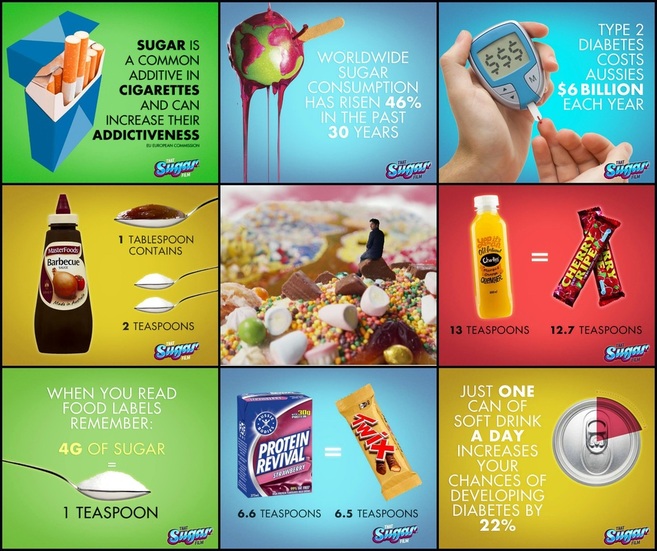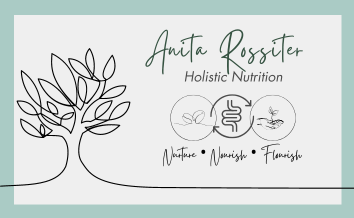 In Australia, we don’t have specific recommendations for the intake of free sugars. In fact in 2005 we were told that “a moderate amount of sugar in daily meals is not a problem. In fact spreading a little jam on wholemeal bread or sprinkling a little sugar to wholegrain breakfast cereal can make these nutritious foods more enjoyable to eat.” (Australian Government, Department of Health and Ageing, NHMRC, Dietary guidelines for Australians: A guide to healthy eating 2005). In the revised 2013 guidelines, we were told to “limit intake of foods and drinks containing added sugars such as confectionary, sugar-sweetened soft drinks and cordials, fruit drinks, vitamin waters, energy and sports drinks” this was the only mention of sugar consumption. What does limit mean? 3 teaspoons a day? 6 teaspoons a day? 20 teaspoons a day? Or perhaps 40 teaspoons a day? Scarily this is the current average Australian’s daily consumption of added sugar. Meanwhile the World Health Organisation (WHO) has recently changed their guidelines for the consumption of sugar in adults and children to reduce our daily intake of free sugars to no more than 10% of our total energy intake but to provide additional health benefits, we should reduce it further to no more than 5% a day. In language we can relate to, 5% of our total daily energy intake would equate to approximately 6 teaspoons of sugar (25 g) for an adult and 3-4 teaspoons of sugar (15g) for children. Just because we aren’t adding sugar to our coffee doesn’t mean we are avoiding added sugars. Free sugars are ALL sugars added by the manufacturer, the person cooking or eating to drinks or food and they are also sugars naturally present in honey, syrups, fruit juices and fruit juice concentrates. Sadly many of the foods recommended in our current dietary guidelines are high in free sugars and contradict the recommendations made by the WHO. Just a breakfast straight off the Australian Guide to Healthy Eating of a couple of crumpets with jam, low fat fruit yoghurt and some tinned peaches can see an adult exceed the WHO recommended daily sugar intake before they leave the house. This is what THAT SUGAR FILM did really well. It exposed free sugar hiding in many perceived “healthy” food options. Damon Gameau had removed all refined sugars years ago from his diet. He decided to explore the effects on his body when he ate the daily sugar intake of the average Australian male (40 teaspoons per day). However he didn’t choose obvious sugar options such as confectionary, ice-creams and chocolates, he limited his diet to foods primarily marketed as “healthy options”. Interestingly his caloric intake was if anything slightly less than his current diet which contains moderate protein consumption, higher healthy fats and low refined carbohydrate.
Under the surveillance of a medical and nutritional specialists Damon’s health changes were monitored such as bloods including lipids and liver function and waist measurement which is an important measure of obesity and disease risk. As early as day 12, he had gained 3.2 kg and noticed and had also gained centimetres around his waist. His liver function was indicating after only two weeks of eating this way that it was under serious stress and liver cells were potentially dying. This is the first stage in fatty liver change which is an indication that the liver is on the way to developing cirrhosis. These free sugars had an effect not only on him physically but also on his moods. After a “hit” he was wired and full of jittery energy but the high was quickly followed by a plummet which also saw his moods lower, lethargy sneak in and focus drop out. Interestingly, he likened this to watching kids behaviour and energy just eating our modern diet. Obviously this is far from a controlled scientific study but as far as anecdotal evidence goes, it is a very interesting case study which certainly highlights a few worrying issues: · Low fat foods are often high free sugar sources – fat is often substituted with sugar · Sugar is sugar is sugar despite one being marketed against another as healthier – we need to eat a whole food rather than a fragmented sugar extraction · Australia needs to stand firm and support the WHO recommendations (our current dietary guidelines stand in contradiction) · We need to look at the vested interests marketing free sugar in “healthy foods” · Our children need to be the number one priority in targeting free sugar removal. The film itself is very entertaining with creative graphics, pockets of humour and a range of expert interviewees. I am yet to take my children but the responses from children I have spoken to have been that it was truly eye-opening for them and the very confronting visual of what sugar is doing to their teeth will remain with them for life. This film could not be more perfectly timed with its release. There is such debate and discussion as a society and a growing collective awareness of how dire the need for change in our diet is RIGHT NOW if we are to slow, stop and reverse what we are seeing daily with our declining health. As mentioned in the film, sugar is not the only component affecting our health but it is certainly an area that needs to be subject to regulation and awareness.
0 Comments
|
Anita RossiterHolistic Nutritionist. Categories
All
Archives
April 2019
|





 RSS Feed
RSS Feed